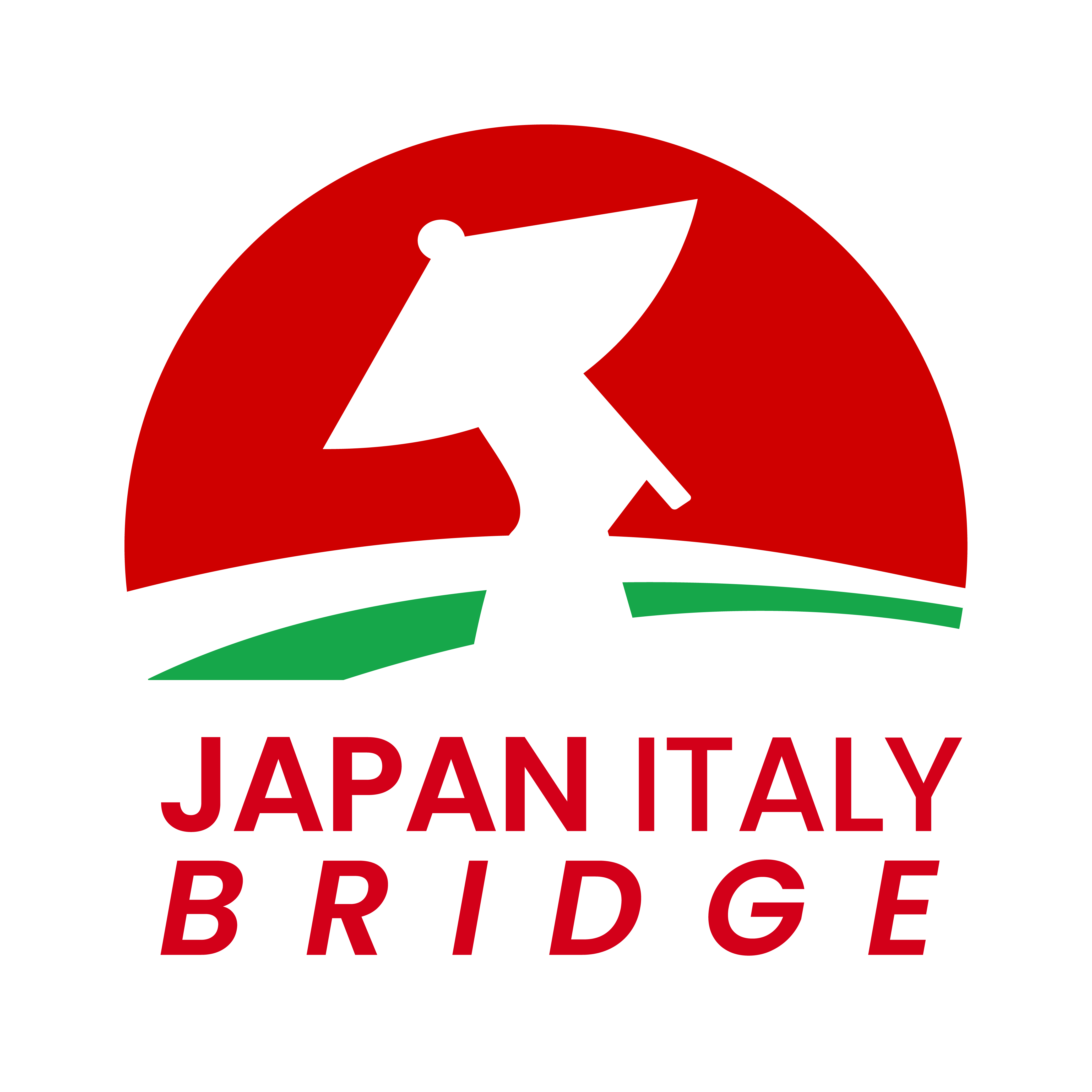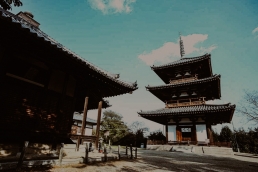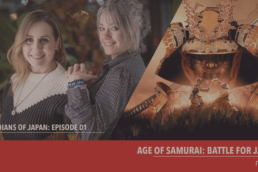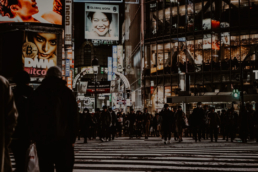Tokyo fra le città più convenienti per il 2024
Tokyo si è classificata tra le destinazioni turistiche più convenienti del 2024, quindi quest’anno è il momento giusto di fare la valigia e partire alla volta del Sol Levante!
Complice anche la caduta dello yen, per tutti i turisti stranieri, questa è in realtà diventata un’importante occasione da cogliere al balzo per visitare la capitale giapponese.
E’ vero, il viaggio per arrivare a destinazione è lungo e a volte dispendioso, ma una volta arrivati a Tokyo, la vita quotidiana è davvero conveniente. Infatti, i prezzi che si possono vedere ai ristoranti sono spesso un terzo di quelli a cui siamo abituati qui in Italia.
Ma non solo! Anche spostarsi con i mezzi pubblici è veramente comodo. Non dimentichiamoci infatti che grazie al Japan Rail Pass e alla mitica Yamanote Line, per un turista vivere la città diventa incredibilmente pratico e semplice.
Negli ultimi anni, da quando si è riaperta la possibilità di viaggiare, abbiamo assistito ad un notevole aumento del numero di visitatori in Giappone. L’interesse verso la terra del Sol Levante, ed in particolare Tokyo, non sembra calare.

Un recente sondaggio di Post Office, classifica infatti Tokyo come la quarta destinazione turistica più conveniente al mondo.
La top 10
- Hoi An, Vietnam
- Città del Capo, Sud Africa
- Mombasa, Kenia
- Tokyo, Giappone
- Algarve, Portogallo
- Sharm el-Sheikh, Egitto
- Spiaggia soleggiata, Bulgaria
- Kuta, Bali
- Marmaris, Turchia
- Pafo, Cipro
Tokyo ha la reputazione di essere una delle destinazioni più convenienti anche prima della recente situazione economica, quindi ci saranno sicuramente tante occasioni anche in futuro per poter visitare la città
Your Japan Tour: Viaggia con noi
Japan Italy Bridge ha appena lanciato il suo esclusivo “Your Japan”, un viaggio in Giappone costruito su misura per i turisti italiani. Per questo autunno, avrete la possibilità di andare con noi a Tokyo. Un’esperienza All Inclusive che vi permetterà di scoprire le bellezze della capitale del Giappone. Japan Italy Bridge si occuperà di tutto, dalla prenotazione di voli ed hotel, sino alla programmazione del piano di viaggio. Inoltre, le nostre guide partiranno con voi dall’Italia e vi accompagneranno lungo tutto il percorso nipponico.
Quindi cosa state aspettando? E’ arrivato il momento di fare la valigia e partire con noi!
Aumenta il Japan Rail Pass ma non diminuisce la voglia di utilizzarlo
Il famoso Japan Rail Pass ora costa il 70% in più rispetto ai prezzi pre-covid, tuttavia, nonostante l’aumento di prezzo consistente, i suoi vantaggi non smettono di fruttare.

Cos’è il Japan Rail Pass?
Potremmo definire il Japan Rail Pass come un “abbonamento per turisti” e, nonostante l’aumento dei prezzi, la sua convenienza è ancora imbattuta.
Il Japan Rail Pass è un biglietto ferroviario multiuso. Permette di utilizzare senza limiti tutti i treni Japan Rail National, agli autobus, ai traghetti e ai transfer aeroportuali.
Il JR Pass consente di viaggiare con facilità e risparmiare tempo durante il soggiorno, anche su treni Shinkansen, senza dover acquistare un nuovo biglietto per ogni viaggio.
Inoltre, i titolari del JR Pass potranno usufruire di sconti presso alcune delle più famose attrazioni turistiche del Giappone a partire da ottobre 2023.
L’aumento estremo dei prezzi
Il turismo verso il Giappone è salito ancora una volta alle stelle; molte industrie e persino i governi locali stanno valutando come addebitare e tassare i servizi.
la JR, a società che gestisce il servizio di treni shinkansen ad alta velocità del paese, offre da anni abbonamenti per corse illimitate da 7 e 14 giorni. Infatti, con il JR Pass è possibile usufruire dello Shinkansen, il famoso bullet train, con corse illimitate; unico requisito, prenotare in anticipo i viaggi.
Per chi non lo sapesse, i prezzi di un biglietto shinkansen possono variare dai 50€ alle 100€ per corsa, a seconda della tratta. Questo ci fa capire come nonostante l’aumento dei prezzi, il costo del Japan Rail Pass è tuttora utile e conveniente, specialmente se dovete spostarvi in diverse parti della città o della nazione.
Tuttavia, il pass ora avrà un costo aggiuntivo. Infatti, a partire da ottobre 2023, i prezzi degli abbonamenti sono aumentati di quasi il 70%. Il lato positivo dell'aumento dei prezzi: il nuovo biglietto consentirà l'accesso ai servizi più veloci Nozomi e Mizuho, esclusi dal biglietto precedente.


Cosa comprende il Japan Rail Pass?
Come abbiamo detto, il Japan Rail Pass vi permette di poter utilizzare tutti i treni e mezzi pubblici appartenenti alla società Japan Rail National. Questo per esempio include la maggior parte dei mezzi pubblici di Tokyo, la linea Shinkansen e diverse linee in città come Osaka, Kyoto, Nara e tante altre in tutta la nazione.
Viaggia con noi
Japan Italy Bridge ha appena lanciato il suo esclusivo “Your Japan”, un viaggio in Giappone costruito su misura per i turisti italiani. Per questo autunno, avrete la possibilità di andare con noi a Tokyo. Un’esperienza All Inclusive che vi permetterà di scoprire le bellezze della capitale del Giappone. Japan Italy Bridge si occuperà di tutto, dalla prenotazione di voli ed hotel, sino alla programmazione del piano di viaggio. Inoltre, le nostre guide partiranno con voi dall’Italia e vi accompagneranno lungo tutto il percorso nipponico.
Quindi cosa state aspettando? E’ arrivato il momento di fare la valigia e partire con noi!
Your Japan: vieni in Giappone con noi
Your Japan è un progetto che nasce dalle menti di Japan Italy Bridge in collaborazione con GiraMondo Viaggi Grezzana e Bandai Namco, viaggi in Giappone unici ed esclusivi. Insieme ai nostri esperti, avrete la possibilità di vivere un’esperienza unica nella città dai mille colori: Tokyo.


Il Giappone, una terra tutta da scoprire
Il Giappone è ad oggi una delle mete più desiderate da tutti gli italiani (e non solo). Da anni Japan Italy Bridge lavora con il Sol Levante e, a poco a poco, abbiamo costruito questo progetto su misura per tutti gli appassionati e amanti della terra nipponica.
Your Japan - vieni in Giappone con noi
Your Japan è un progetto che nasce dalle menti di Japan Italy Bridge in collaborazione con Giramondo Viaggi Grezzana e Bandai Namco. Insieme ai nostri esperti, avrete la possibilità di vivere un’esperienza unica nella città dai mille colori: Tokyo.
Una delle megalopoli più grandi al mondo dove la modernità convive con il Giappone tradizionale. Una fusione quasi perfetta che ci permette di passare dalle atmosfere zen dei giardini del Palazzo Imperiale, sino ad arrivare ai vivaci quartieri di Shinjuku ed Akihabara. Ed è proprio in quest'ultima zona che si aprono gli orizzonti a tutti gli amanti di manga e anime. Non importa quanti anni abbiate, qui è il posto giusto per trovare “vecchi” videogiochi storici, o le nuovissime uscite sul mercato. Da nomi storici come Pac-man a Dragon Ball, passando per titoli storici come Ken il Guerriero, City Hunter, i Cavalieri dello Zodiaco, sino ad arrivare a titoli più recenti come Tekken.



I nostri partner
Il marchio GiraMondo Viaggi nasce nel centro storico di Verona nel 1979 con una singola agenzia di viaggi. Con il passare degli anni, il marchio cresce, convertendosi in un gruppo, con molte agenzie di viaggi, presente sul territorio nazionale ed internazionale.
Attualmente si contano un centinaio di agenzie, con marchio GiraMondo, ciascuna con il proprio negozio e location unica in Italia e all’estero.
Leader dell'industria dell'intrattenimento mondiale, BANDAI NAMCO Entertainment Europe pubblica e distribuisce videogiochi e prodotti di intrattenimento in Europa, Medio Oriente, Africa e Asia-Pacifico. La filosofia aziendale è "More Fun For Everyone".
La missione del gruppo è di portare "più divertimento per tutti" in tutto il mondo, con l'obiettivo di diventare i leader dell'innovazione nell'intrattenimento globale.
Dal loro quartier generale europeo a Lione lavorano a titoli come pac-man, soulcalibur, tekken e dark souls… oltre a nuovi progetti come little nightmares, twin mirror e the dark pictures.
I tour leader di "Your Japan"
Il nostro pacchetto è pensato per darvi tutte le attenzioni necessarie per farvi vivere un’esperienza unica ed indimenticabile. Infatti, il nostro staff italiano vi assisterà per tutta la durata del viaggio. I nostri tour leader partiranno da Malpensa con voi e vi accompagneranno per tutta la durata del soggiorno, sino al vostro rientro in Italia.


In questi 8 giorni, il nostro staff vi porterà alla scoperta della capitale giapponese, con Experience esclusive e gite fuori porta per poter ammirare anche il Momiji, periodo dell’anno in cui avviene il cambio del foliage.
Fra alberi di Ginko, templi e grattacieli, avrete l’opportunità di vivere un’esperienza indimenticabile e soprattutto all inclusive. Il nostro pacchetto è stato proprio costruito per dare la possibilità ai viaggiatori di non dover pensare a nulla se non a godere delle bellezze di questa fantastica terra. Non dovrete quindi preoccuparvi di voli, hotel o visite guidate perchè è tutto compreso nel prezzo. Inoltre, per chi prenota entro il 30 giugno, avrà anche un ulteriore sconto di 100€ per camera.
Quindi, cosa state aspettando? È arrivata l’ora di fare la valigia e partire con noi!
Tempio Gōtokuji: un monumento ai 1000 gatti
Il gatto più famoso del mondo è forse il Maneki-neko, ovvero la statuetta a forma di gatto con la zampina alzata che arriva direttamente dal Giappone.
In pochi però sanno che la presunta origine di questa statuetta deriva da un tempio giapponese: il Tempio Gōtokuji.


Il Tempio Gōtokuji
Posizionato all’interno del quartiere di Setagaya, una delle zone residenziali di Tokyo, non è conosciutissimo dai turisti generici e raramente ne riceve visita. Tuttavia, a nostro parere questa è una meta immancabile per tutti gli amanti del Giappone. Infatti, nel nostro tour “Your Japan” abbiamo dedicato una visita esclusiva e speciale proprio a questa location.
Il tempio Gōtokuji è una meta immancabile per tutti gli amanti dei gatti proprio perché ospita diverse migliaia di statuette Maneki-Neko di varie dimensioni.
La storia del tempio Gōtokuji
Il tempio Gōtokuji è un cimitero feudale ben conservato dell'era Edo. Questo lo rende uno dei monumenti storici nazionali più iconici della zona.
Leggenda narra che Naotaka, il signore di Hikone, fu invitato nel tempio da un gatto che gli fece cenno con la zampina. All’improvviso scoppiò un temporale e il signore rimase impressionato dalla fortuna che il gatto gli portò proprio nel momento giusto. Questo lo spinse ad aiutare nei lavori per il restauro del tempio, completati nel 1633.

Successivamente, lo Shofuku-den fu costruito come parte del tempio per custodire il gatto porta fortuna, conferendogli da qui il nome di “Maneki-neko”. Da quel momento in poi, molte persone visitano proprio lo Shofuku-den per pregare per il benessere, prosperità, fortuna e felicità.
E’ possibile trovare le famose e numerose statue dei gatti di tutte le dimensioni in un angolo del tempio.
Il cimitero e la storia
All’interno del tempio è presente un cimitero che appartiene al clan di Naotaka, che fece del tempio la sua eredità più nota. Il cimitero ospita anche molte figure famose giapponesi, tra cui il maestro di karate Oyama Masutatsu e diversi Primi Ministri.
Inoltre, nel tempio si possono trovare anche bellissimi giardini che offrono un sereno rifugio dal caos e dalla frenesia di Tokyo.

Il simbolismo dietro il Maneki-neko
Il Maneki-neko è uno dei simboli giapponesi più amati in occidente. Tuttavia, la statua non è direttamente portatrice di felicità, ma dà la possibilità di stabilire legami con determinate persone. Il risultato finale, dipende interamente dai propri sforzi.
Il messaggio che si cela dietro al Maneki-neko è che si vivi in costante gratitudine, la fortuna e la felicità arriveranno spontaneamente.
Nara, the capital of Buddhism in Japan
Japan, like Italy, has many tourist destinations and among them are the seven temples of Nara, a destination rich in history and culture.
The 7 Temples of Nara, the capital of Buddhism
Autore: Sara

Those who approach the culture of the Rising Sun for the first time are led to believe that Buddhism has always been a strictly Japanese philosophy, also thanks to the numerous temples scattered throughout the country. In reality, few people know that it was a Korean king who "exported" this religion to Japan! It all began when the prefecture of Nara was the center of politics, culture and economy of the country. The Japanese people were purely Shintoist, that is a follower of "Shinto" (神道): a polytheistic religion of animist type that revolves around the existence of many Kami ("gods", "spirits") that are believed to inhabit all things. In 552, King Seond of Baekje, a kingdom in the southwest of the Korean peninsula, brought to the Japanese court a statue of Shakyamuni (historical Buddha) and many satras. The emperor of the time, Kimmei, was attracted and slowly Buddhism established itself as the new state religion.
Nara thus became Nanto Shichi Daiji (南都七大寺), the capital of Buddhist temples built by imperial order, now a world heritage site, and includes:
- Horyuji(法隆寺)
- Houkiji (法起寺)
- Todaiji(東大寺)
- Kofukuji(興福寺)
- Gangoji (元興寺)
- Yakushiji (薬師寺)
- Toshodaiji (唐招提寺)
The Seven Temples of Nara
.

photo credits: https://www.japan-guide.com
Horyuji
Horyuji Temple is the first site to be designated a UNESCO World Heritage Site in Japan. Founded in 607 by Prince Shotoku at the behest of his father, Emperor Yomei, it was rebuilt in 670 following a fire that almost burned it down, and today is considered the cradle of Japanese Buddhism. The area over which the large temple complex stretches can be divided into the west side, Saiin garan (西院伽藍, where the five-story pagoda, golden hall, corridor and internal portal are located) and the east side, Toin garan (東院伽藍, where the octagonal Yumedono (夢殿, the hall of visions) stands.
Official Site: http://www.horyuji.or.jp/assets/images/pdf/english.pdf
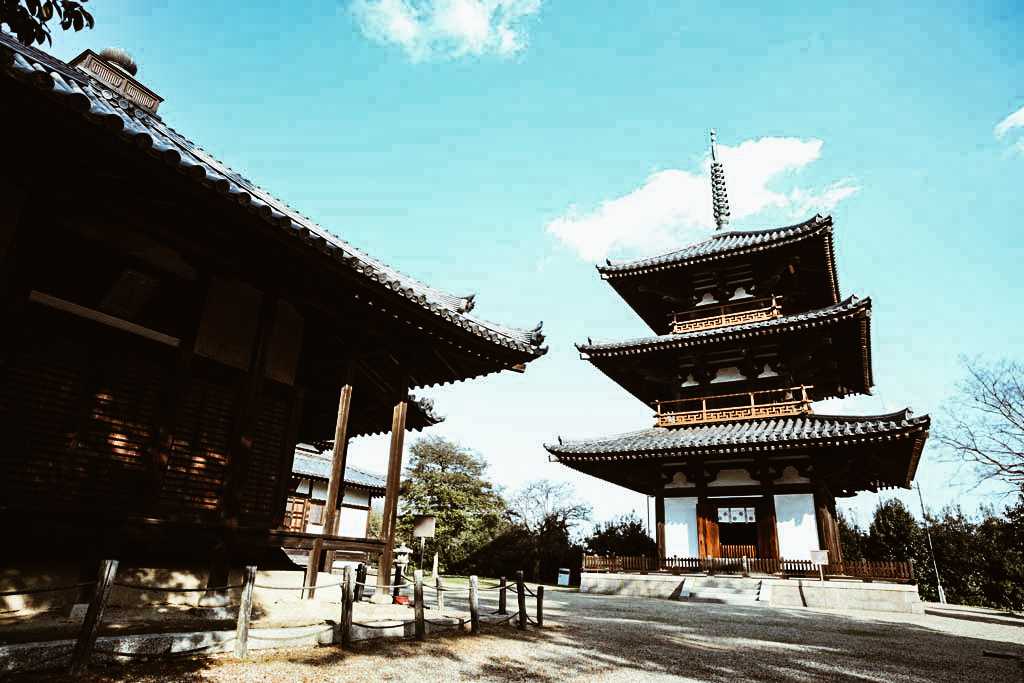
photo credits: masterpiece-of-japanese-culture.com
Houkiji
This temple with multiple identities (it is in fact also known as Okamoto-dera 岡本寺, Okamotoniji 岡本尼寺, Ikejiri-dera 池後寺 and Ikejiriniji 池後尼寺) is located just under 2 km from Horyuji. It was originally the palace of Shotoku Taishi's family, but before his death he ordered his son Yamashirono-ooenoo to rebuild it in the form of a temple. Houkiji consists of a main hall and a 3-story pagoda, about 23 meters high: the largest and oldest of its kind in Japan (it was built in 685). A symbol of this temple is undoubtedly the 11-headed wooden Kannon and the bronze Bosatsu (both gods of compassion).
Official Site: http://www.horyuji.or.jp/assets/images/pdf/english.pdf

photo credits: shoreexcursions.asia
Todaiji
Todaiji was founded by Emperor Shomu in 752, with the sole purpose of housing the statue of the Great Buddha in the Great Hall (Daibutsuden). After 7 long years of construction, the temple was burned down as a result of war in 1180 and continued to suffer the consequences of conflict until 1567. Restored each time, the temple's current form dates back to 1709 and its seated Buddha represents Vairocana and is flanked by two Bodhisattvas. The temple's grounds extend across almost the entire northern part of Nara National Park, so it is not uncommon to come across the famous deer seeking attention!
Official Site: http://www.todaiji.or.jp/english/index.html
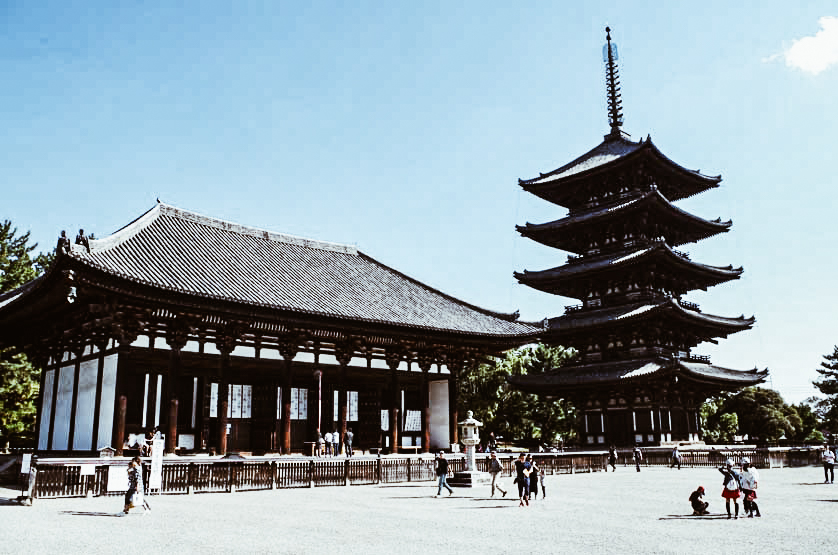
photo credits: japanvisitor.com
Kofukuji
Kofukuji was originally the temple of the powerful Fujiwara clan and one of the main temples of the Hosso (法相宗) sect, one of the six sects of Nanto. The temple consists of several buildings of important historical value and as many as two pagodas: one five-story and one three-story, which unfortunately cannot be visited. To make up for this lack, however, there is the National Treasure Museum where you can admire the statue of Ashura and the bronze head of Buddha.
Official Site: https://www.kohfukuji.com/english.html
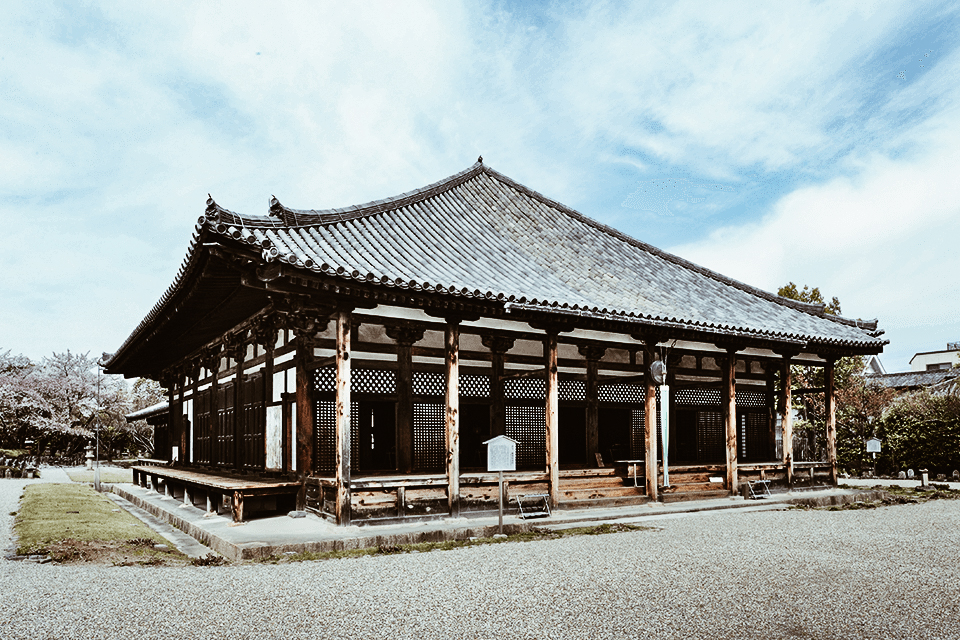
photo credits: kintetsu.co.jp
Gangoji
Founded by Soga no Umako, Gangoji is among the oldest temples in Japan, having been moved from Asuka to Nara in 718. Almost as a gloomy tradition, this temple also suffered the wrath of nature and the devastation of fire and in 1451 almost the entire structure was destroyed and it was no longer possible to recover the ancient splendor of Gangoji except for the Zenshitsu Hall, located at the back, the only original survivor.
Official Site: https://gangoji-tera.or.jp/

photo credits: japan-guide.com/
Yakushiji
Esattamente come Kofukuji, anche Yakushiji è il tempio principale della setta Hosso del buddismo. Fu costruito dall’imperatore Tenmu per sua moglie nel 680. Come ogni tempio, anche questa volta troviamo una grande statua del Buddha: in questo caso Yakushi-Nyorai possiede il potere della guarigione ed è in grado di dare conforto. Inoltre Yakushiji possiede due pagode, una sala dorata ed una collezione di oggetti d'arte buddista, tra cui una Triade Yakushi, un Kannon-Sho e dipinti di grande pregio
Sito Ufficiale: http://www.nara-yakushiji.com/
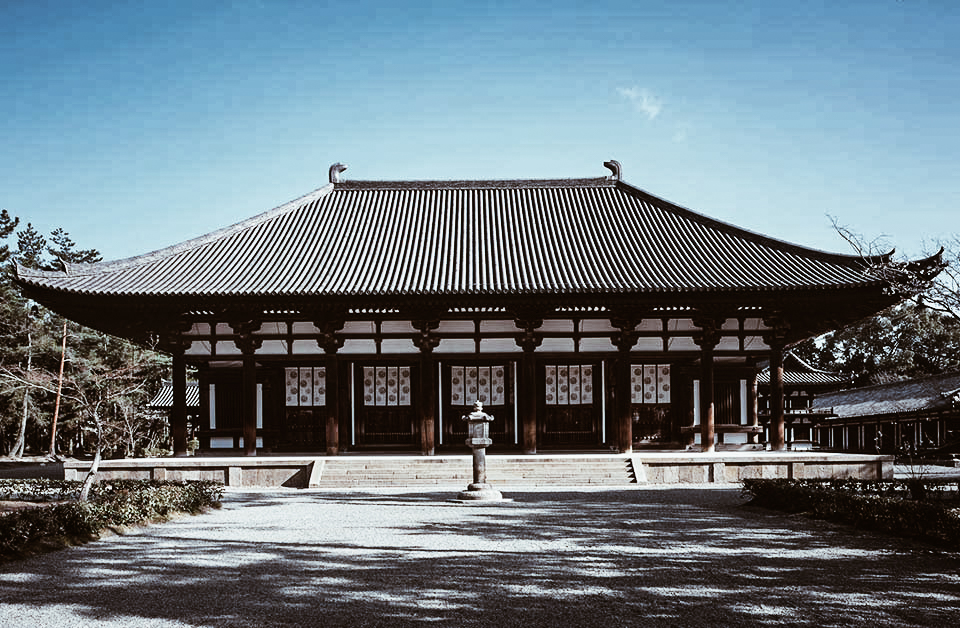
photo credits: toshodaiji.jp/
Toshodaiji
Toshodaiji was the first temple founded in 759 by a Chinese priest, Ganjin, who was sent by the emperor for the purpose of teaching priests and improving Buddhism in Japan. His teachings had a great influence for the country and today it is the main temple of the Rishu (律宗) sect. The main hall, Kondo, contains 9 statues of Buddha!
Official website: https://www.toshodaiji.jp/english/index.html
7 Temples, 7 fascinating wonders dedicated to the care of the soul: although they may seem extremely similar to each other, each building is characterized by unique and precious elements to discover and admire! How about dedicating some of your time to walk around Nara to discover these devout places? Have you already been there? Let us know your impressions and emotions!
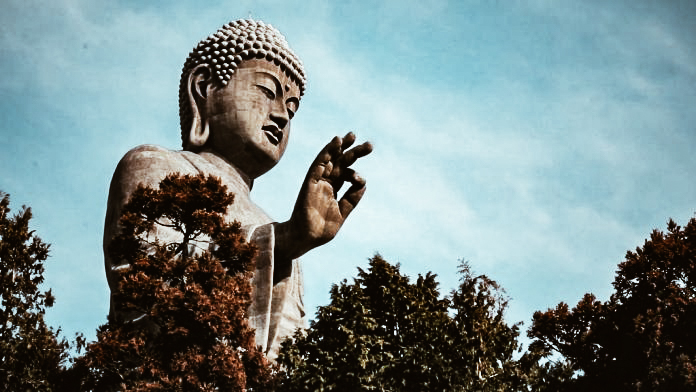
photo credits: thejapanesedreams.com
Guardians of Japan - Episode 01: "Age of Samurai: Battle for Japan" review
Here we are again with a new web series by Japan Italy Bridge! As you know, we aim to communicate and promote Japanese culture and companies in Italy and vice versa.
Since it is not possible to travel in this period, we have decided to try to shorten the distance between Italy and Japan even more by telling you not only about our experiences but also by sharing what we know about the Land of the Rising Sun.
We have already produced a web series dedicated to the promotion of Japan here in Italy called "Bringing Japan to Italy" and now we start with this new series dedicated to the history of Japan and mainly to those figures that fascinate us Westerners: the Samurai. For those who have been following us for some time, you already know that we have a fairly rich column on this subject on our blog and now we have decided to delve into it all through a video podcast.
So at each episode we are going to analyse the life and adventures of Japan's most important Samurai and we decided to dedicate the first episode to the review of the TV series "Age of Samurai: Battle for Japan" that you can find streaming on Netflix! We had already anticipated the arrival of "Age of Samurai" on Netflix and now after a full immersion we are ready to tell you what it is about, our impressions and also some curiosities!
We hope you enjoy this first episode and we are really curious to receive your feedback. Stay tuned because in the next episodes not only will you be able to discover the true history of Japan, but there will also be many surprises waiting for you, enjoy!
Authors: Erika Panzeri, Angie Antenucci // Japan Italy Bridge
Editing: Erika Panzeri // Japan Italy Bridge
Some of the footage in the video is owned by Netflix, we do not claim property of that footage.
Business Focus: How to approach the Japanese market
Here we are again with the column dedicated to the Business Focus and today we are talking about how to approach the Japanese market. Starting from start-ups up to large companies, very often we tend to forget to approach and target the Japanese public and this is a mistake from the beginning. Why eliminate a slice of the market that represents the third world power in terms of consumers?
How to approach the Japanese market
Autore: Erika
As we mentioned earlier, the Japanese market represents the third largest slice of the world by consumer level. Instead, did you know that social media platforms, even the biggest ones, consider the Japanese market as the second largest market in the world? This is because China, which would occupy the second place, has blocked many foreign companies and corporate policies, causing the focus to shift to Japan.
However, very often companies make the mistake of excluding Japan from their marketing strategies. This is because the Japanese market is also one of the most difficult to approach. In reality, you just need to be able to adapt to their mentality and ways.
The obstacles of the Japanese market
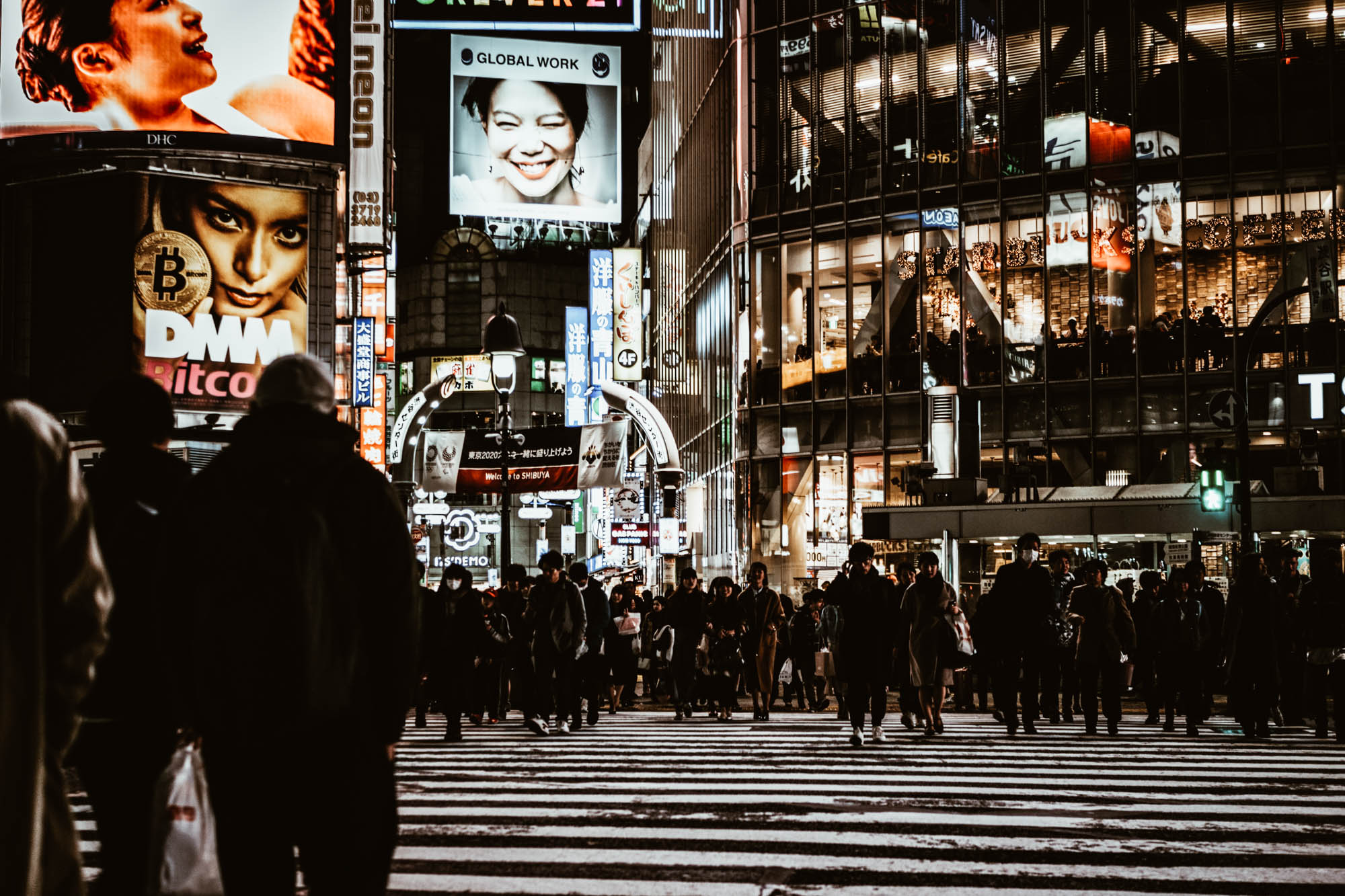
One of the biggest problems that Western companies find when approaching the Japanese market is primarily the language barrier. In fact, the average Japanese customer prefers to use their own language for both private relations and business exchanges. In fact, according to EF, Japan ranks 55th in the chart table in terms of knowledge of English.
If we add to this the fact that Japan is a country that is very attached to tradition and also to its customs and traditions, the approach to this market becomes even more difficult. However, this should not stop us, but rather stimulate us to find a way to reach this market. So, what kind of marketing strategies and tactics could we adopt? How to deal with this situation?
Digital is the solution

The strategy is actually not that complicated, digital and new media are our solution. If we're talking about startups in fact, often the available budget is limited and splitting this on different platforms to have more presence could actually be counterproductive. Better to focus your savings on digital. Over the years of working with Japanese companies and people, we've tried many different ways to promote companies. So here are our tips on where to focus.
Facebook & Instagram ads
In the past, we've already addressed how new digital media, and social media in particular, can help us set our company sailing internationally. In particular, the ads feature of Facebook and Instagram is one of the best tools to target specific users. Both start-ups and established companies should take advantage of this tool to be able to reach their audience.
The two social media platforms obviously have different demographics, with Facebook reaching a more adult audience in Japan and Instagram reaching a younger audience. By combining the two platforms and using them to promote your company, you can reach a wider audience. Obviously, before embarking on a promotional operation, it is important to study your mission and your target audience to be able to reach the right niche audience on the right social.
Twitter ads
One of the most successful social networks in Japan is definitely Twitter. Twitter has more monthly active users (45 million) than any other social media platform such as Instagram (33 million) and even Facebook (26 million) in Japan.
Twitter is a bit of a "controversial" platform, you either love it or hate it. However, when used for business it can become a really powerful and effective media as much as Facebook, especially when it comes to ads. In some cases, depending on the industry, it could even outperform Facebook. Twitter also reaches a very young audience and many Japanese companies have used Twitter ads not only to increase their brand awareness but also to increase their profit organically. If you want to reach the young audience in Japan, Twitter could be the solution for you.
Influencer Marketing
And finally we come here, to Influencer Marketing, what we believe to be the strategy that works best internationally today. In today's world, we are all bombarded by the myriad of advertisements, focusing on influencer partnerships could become a positive thing.
However, influencer marketing can be a double-edged sword. The first step to pay attention to and that will determine the success of a good campaign is the correct choice of the influencer with whom to collaborate. In this case it becomes even more important to be able to find the right influencer who is in line with your image and who has an audience in line with your target.
Obviously, being able to collaborate with big names like Chiara Ferragni or Naomi Watanabe is really difficult, however, there is a category that should not be underestimated: micro-influencers. They have limited followers compared to the others, but they also have a higher engagement rate. These could not only be loyal customers or brand advocates but also be able to bring the audience to your niche.
Investing in marketing is always a great choice and startups that may not have an infinite budget can narrow down their strategy to something targeted and functional. The Japanese market may seem strange but it has the potential to be the springboard for your company. Absolutely not to be ignored.
Business Focus: Content Strategy, everything you need to know before you start
We continue our column on Business Focus talking about Content Strategy. Last time we talked about Native Advertising which is closely related to content marketing. So today, let's go and see what to do before jumping into the fray!
Content Strategy, how to lay the foundation for a solid campaign
Author: Erika
Probably some of you have already heard of Content Marketing, after all it is one of those types of promotion that is going for the most along with Native Advertising. However, a campaign cannot work separately from a more comprehensive and long-lasting strategy.
"Having a precise and structured content strategy is key to creating winning digital campaigns."
This is not only one of our mantras, but it should be that of every company that decides to approach (even for the first time) digital marketing. In fact, there is no content marketing without content strategy, or at least not one that works profitably.
So it's extremely important to study and understand how we can leverage a winning strategy for our business, whatever it may be.
What are Content Marketing and Content Strategy

First of all, let's understand what it actually is.
Content marketing is the creation and distribution of useful and valuable content. All this aimed at a well-defined target audience in order to attract and acquire potential customers and make them take profitable actions.
The content strategy instead deals with the more "theoretical and strategic" aspects. In the strategy we must in fact include all sides related to the planning and management of content throughout its life cycle. This includes not only the creation and publication of the content, but also a careful analysis. In fact, we're talking about a study that involves aligning content with a company's goals, content development, production, measurement and even archiving. This entire phase precedes the implementation of the content itself.
Content strategy is what lies upstream, everything that defines and regulates the practical development process. In fact, the figure of the content strategist does not deal with the production of content, but focuses the attention to the planning of the same. This is the person responsible for deciding not only when content should be published but above all why it should be produced. In fact, each content is a single brick that goes to lay the foundation for the success of the whole communication strategy. It is therefore important to have a well-defined project, studied and that can be analyzed in every step.
Content Strategy: What you need to know before you start
We've said that content strategy is ultimately nothing more than a strategy that envisions a company's business goals and then uses content as the primary means to achieve those goals.
Content can be of various types but one of the important focuses that these have in common is the intelligent use of stories and creative writing, in any form, but we’ll talk more on that in another article.
Content marketing, even in Japan, focuses on a variety of content that can range from a blog post to a confirmation page. The task of these productions is to build a connection of trust between a company's products or services and its target audience. This becomes more fundamental in Japan, where gaining the trust of the customer means everything and has much more weight than in other countries. In fact, as we've mentioned in the past, the Japanese people are basically a traditionalist nation that doesn't like change. In fact, once the target audience trusts and relies on a specific company, they never leave it again.
But this is just the beginning of the Content Strategy concept, so let's take a more specific look at what is involved in a good strategy.
Content strategy: The Vision

When we decide to approach something, if we want this thing to be successful, the fundamental basis is to have a clear vision of what this is all about.
Defining the goals, objectives, what we hope to accomplish and how we hope to accomplish it are the first steps toward writing a good business plan. This starts with a vision of what we want the company to be in three to five years, and then creating an action plan to achieve that vision. This is the foundation of a good strategy.
In addition to making a list of all these things, it is equally important to measure with milestones and goals that are solid enough to challenge ourselves but at the same time flexible and adaptable to any situation. And in this regard, this pandemic has certainly taught us very quickly that everything is mutable and everything can change in a matter of very few days. Hence precisely the importance of having stable and precise goals, but at the same time flexible and adaptable to any occasion. This will allow you to have things well clear and under control, and to start your journey from a stronger position.
This is all part of content strategy. Dealing with the vision, the pros and cons of how and why a piece of content will be created, managed, archived or updated.
At the end of the day, content strategy boils down to writing and planning content with specific goals and objectives in mind. Nothing we're going to share should be disconnected from everything else in the content and business goals. That's really where vision and purpose come into play.
Planning for success

Whatever project you're working on, whether it's personal or for a client, if you want to grow your content it becomes a matter of visibility. Inevitably we will find ourselves fighting for the top spot on google or finding our audience on social. To do this though, it means we need a strategy or otherwise a plan of action.
By now we know what we want to achieve with the content that we are going to create. The correct question to ask ourselves now is "how can we achieve it? In what way?" So let's talk about the method.
Surely the first step is to have an edge over the competition, but we can't all be Chiara Ferragni and be first in the field. So how can we do that? The answer is to have a solid and smart content marketing plan in place.
Getting discovered is one if not THE big ask in recent years and at the root of it all is always interpersonal relationships. Getting our friends and their friends to read and share is the first step toward expanding our audience. This could be the beginning of our strategy.
However, in order for this to work, we need to find the exact target of not only our audience but also our content. To get to this point we need to take a close look at what has already been done and how it is working, so let's talk about analytics.
Here's another important word in all strategies and, more generally, in all work: analysis.
Content review is indeed one of the most important steps in developing our strategy but it's not the strategy itself. Doing a careful review of all the content that has already been shared, even by our competitors, will help us better understand what can work and what can't. Next, we can go deep into analyzing our own content and repurposing it to see what might be more successful.
Thinking strategically really comes down to asking good and right questions at each step of the process.
Give the right purpose to your content

In today's world, where our smartphones and dashboards are crowded (or rather overcrowded) with all kinds of content, it becomes really important to carefully select what we are going to share. Throwing any kind of photo or video into the ether just to create presence no longer makes sense. It's much better to invest time and energy in creating content that has a chance and a clear purpose.
Let's remember that we want our content to be successful, to reach our audience and to make us gain something, be it brand awareness or other kind of profit. So why waste content before it has a chance?
The audience is now used to receiving endless content input and we want to make sure ours succeeds. We want to make sure that our content reaches our audience and leaves a good impression. We already know that Japanese audiences are not easy to impress. So, how can we achieve this? Simple, by planning our content and thinking strategically.
The key is always to have a strategy before creating any content. We should not just push out content for the sake of it, but rather think about its quality as well, and fit it into a specific time frame.
So, before we jump into the content creation fray we need to ask ourselves the right questions. What do we want to achieve? How does this new content fit in with the content we already have or are thinking about planning? What is the big picture of our content?
These are all fundamental questions to answer before we begin our production. Let's not forget that we have a specific purpose, whatever that may be, and that purpose needs to be well defined. For example, are you creating content to increase brand awareness or generate leads? There are many purposes, but the important thing is to be clear about what they are so you can plan the right strategy.
Give your content a purpose and you'll give your audience a reason to read, watch a video, like or re-share. The audience is not a flock of people but a living, intelligent organism, capable of understanding exactly where a piece of content is coming from and why we are publishing it. This is even more valuable with Japanese audiences who are increasingly attentive and selective in their search for content.
If we're creating a piece of content for a reason and planning it in advance as part of our strategy, the audience will notice. Similarly, if we were to do the opposite and throw things out randomly, without a specific strategy behind it, the audience will notice it too.
That's why purpose is so important.
Here’s the bottom line
Creating an effective content strategy that manages to connect with an audience and inspire them to action can seem really complicated. However, as we've come to realize, it's the foundation of any successful marketing campaign. Creating content that has a purpose, that is part of a larger vision and that connects us with our audience is the foundation of any good communication strategy.
It's not always a skill or resource that we find within all companies, which is why there are realities like ours that take care of following this whole part even on behalf of third parties. We take care of creating this model, producing the content and maintaining the work done and then repeating it. Our efforts are put into creating a strategy that will allow your potential audience to discover you. This makes it easier for you to focus on other aspects of your work, or just relax without having to think about it!




